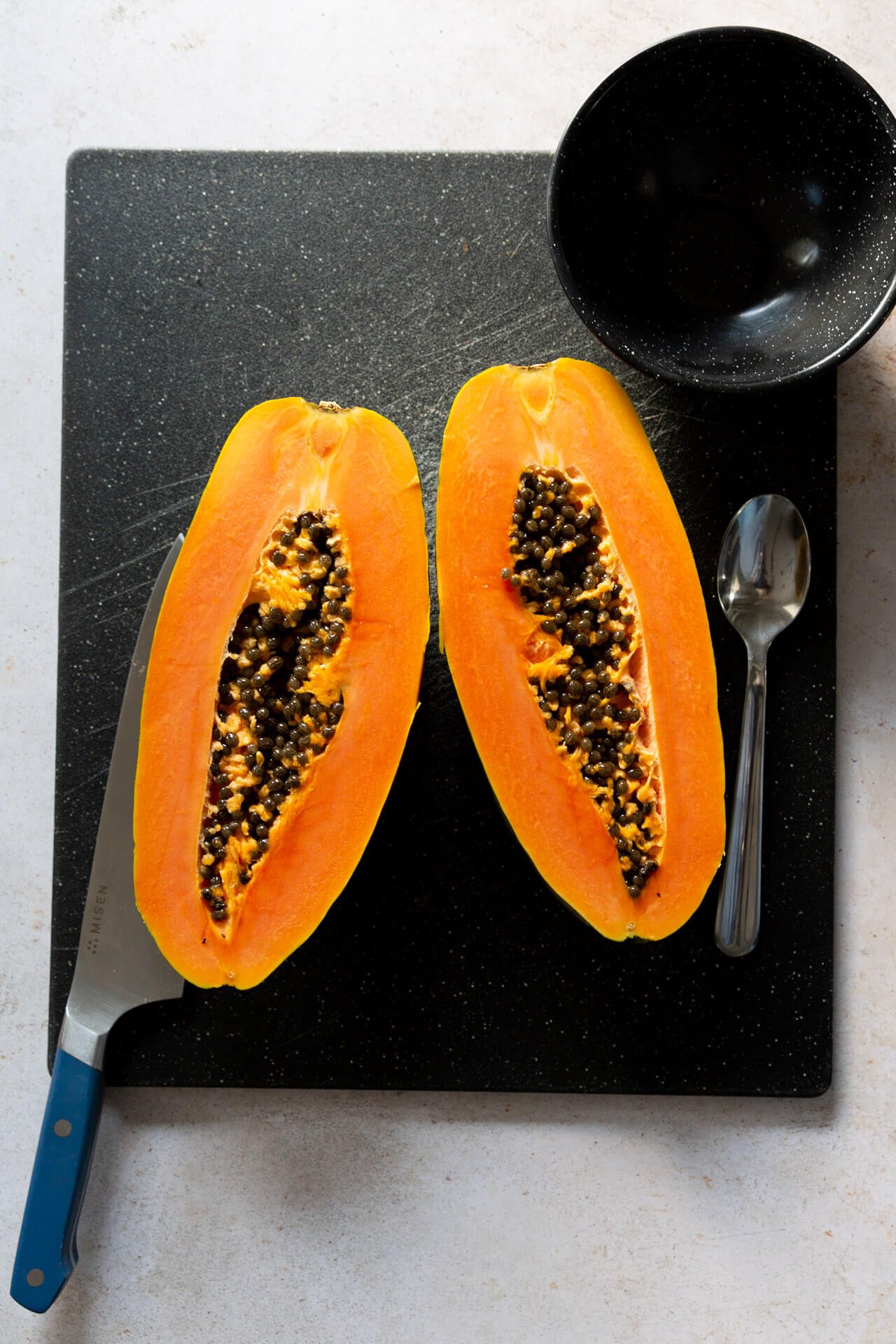
Table of Contents
All About papaya
Are you looking for delicious and nutritious fruit to add to your diet? Look no further than papaya! This delicious tropical fruit is packed with vitamins, minerals, and other nutrients that can benefit your health in many ways.
What does papaya Taste like?
Papaya is known for its sweet, juicy flesh and pleasant aroma. It has a soft, buttery texture and a flavor described as a cross between mango and cantaloupe. Plus, it’s a versatile fruit that can be enjoyed independently or used in various recipes, from smoothies and salads to desserts and snacks.
Nutritional benefits of papaya
But beyond its delicious taste, papaya is also a nutritional powerhouse. It’s rich in vitamin C, an antioxidant that can help boost your immune system and protect against illness. It’s also a good source of folate, important for healthy cell growth and development, and potassium, which can help regulate blood pressure and support heart health.
In addition to these vitamins and minerals, papaya contains a unique enzyme called papain. This enzyme can help aid in digestion, making it a great fruit to enjoy after a meal or as a snack throughout the day.
How to cut a papaya?
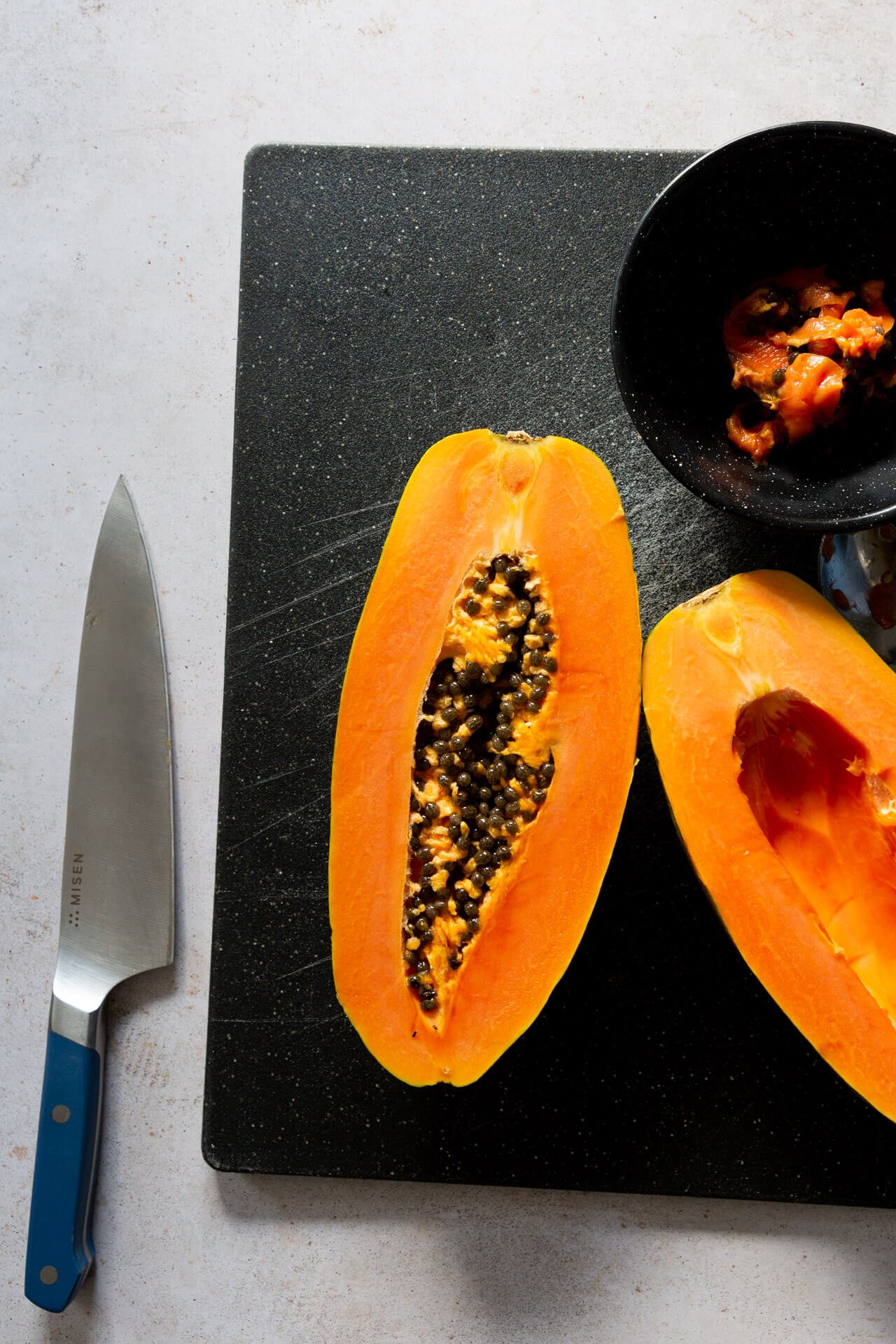
Wash the papaya: Before cutting it, wash it thoroughly under running water to remove dirt.
Cut off the top and bottom: Using a sharp knife, slice off the stem and blossom ends of the papaya. This will create a flat surface and make it easier to cut.
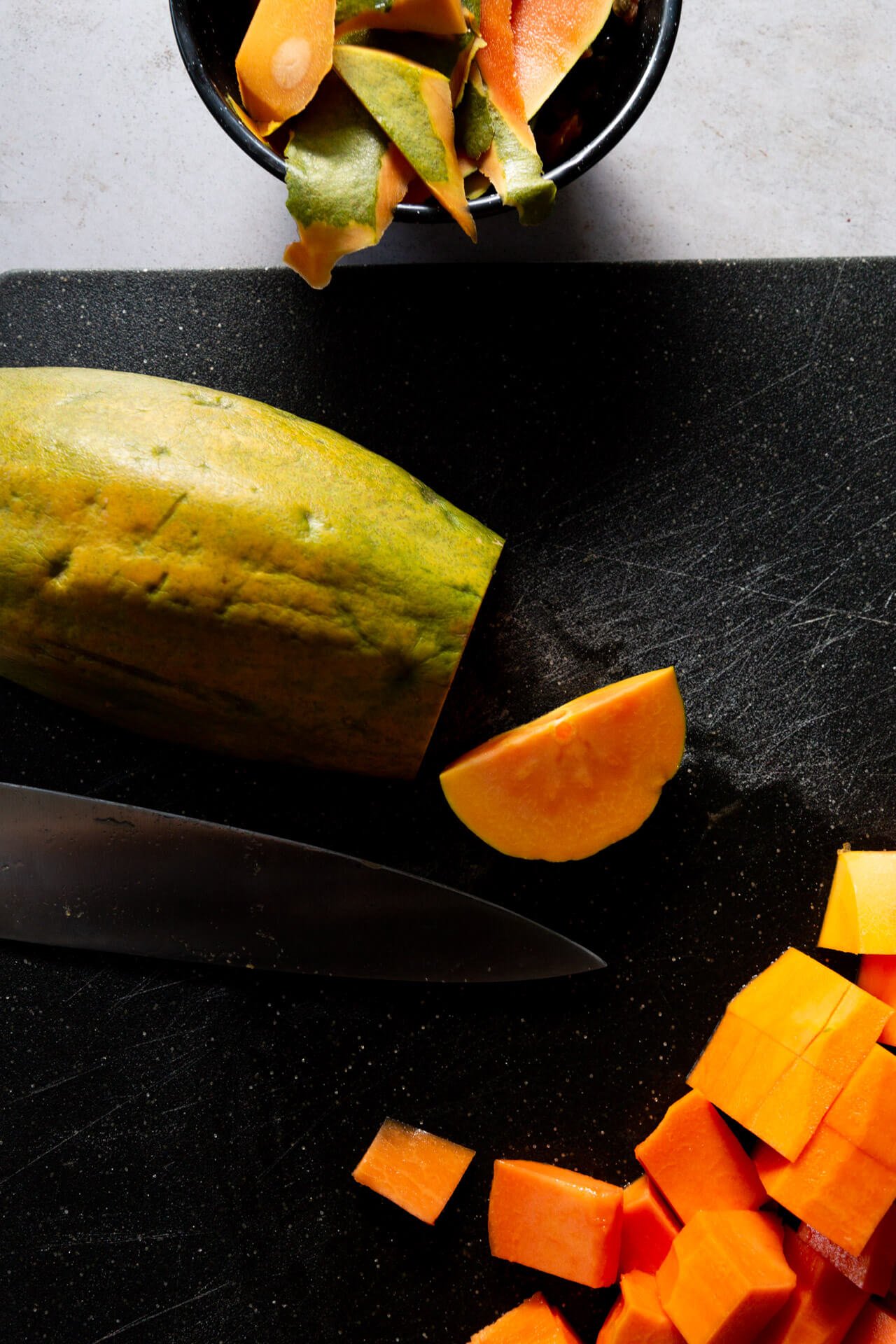
Cut the papaya in half: Hold it on the cutting board and slice it lengthwise down the middle using a large, sharp knife. Cut through the entire fruit.
Scoop out the seeds: Using a spoon, scrape out the seeds and the membrane surrounding them from the center of the papaya. Have a medium bowl on the side and scoop them there.
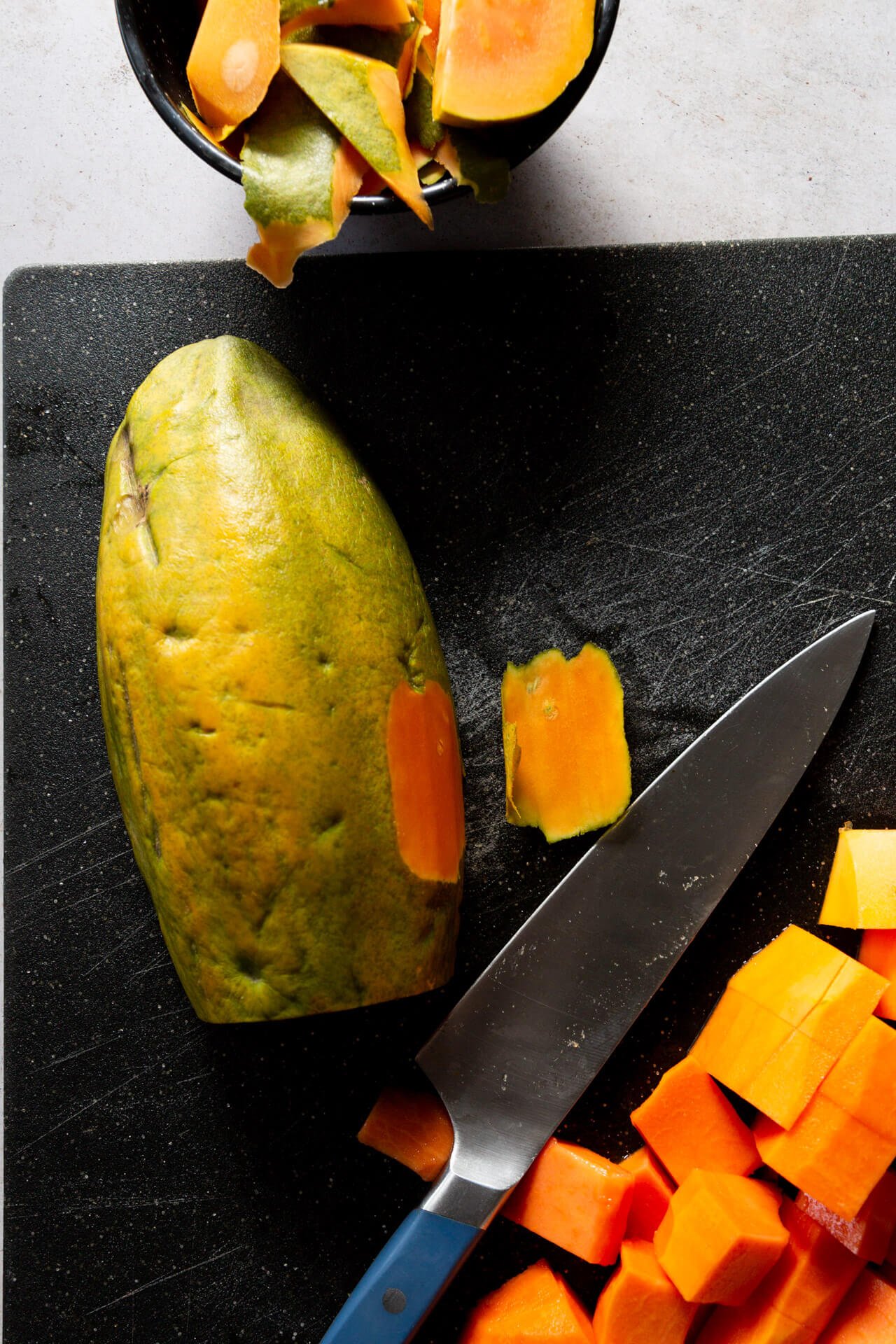
Peel the skin: With a sharp knife and one-half of the papaya lying flat on the cutting board, start by holding the fruit vertically and using a sharp knife to slice down along the skin in long strokes.
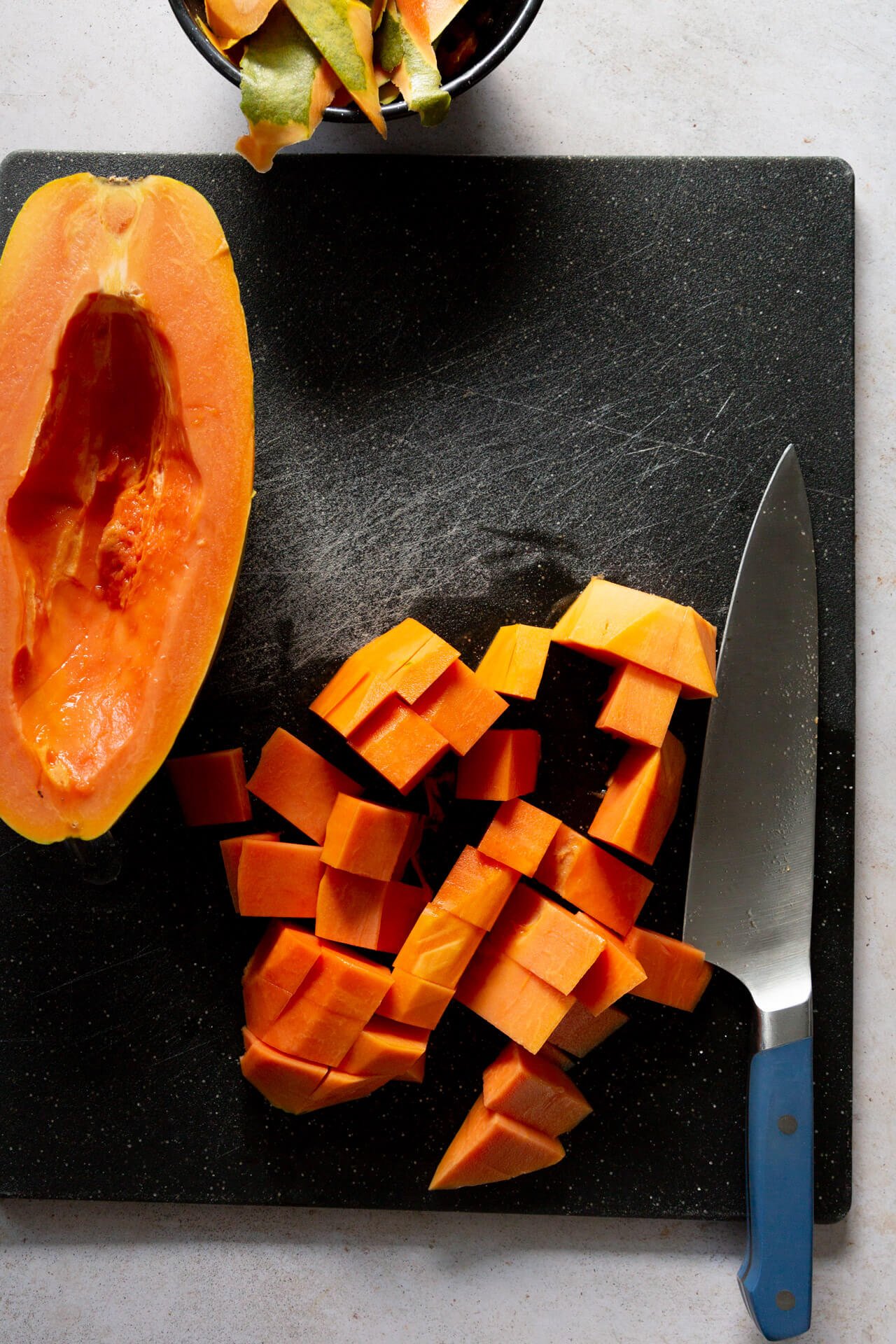
TIP. If you don’t feel comfortable using a knife, you can also use a vegetable peeler to remove the skin. Another option is to cut the papaya into slices and use a knife to peel off the skin from each slice.
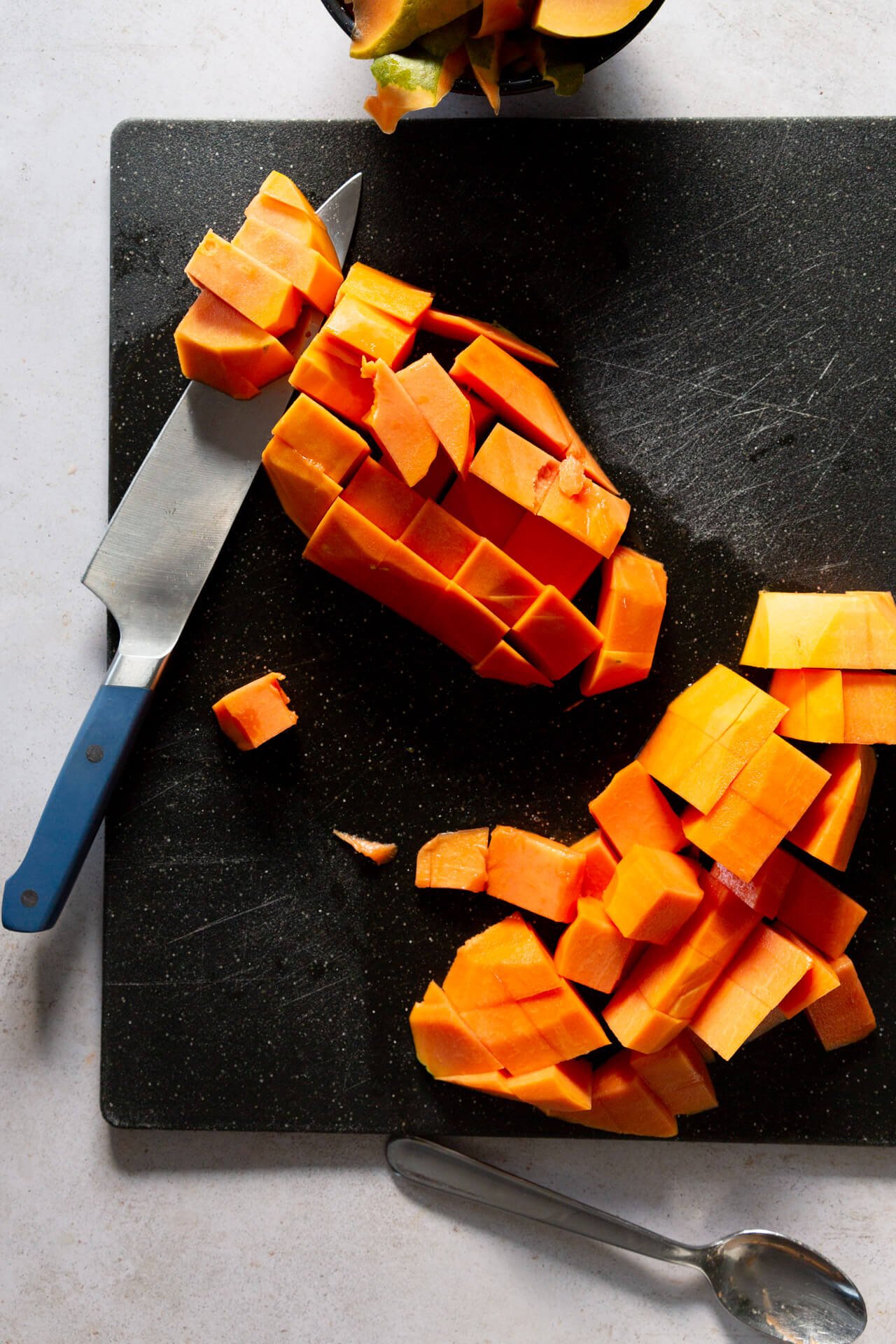
Cut the papaya into slices or cubes: Lay each half of it flat on the cutting board and slice it into thin, even pieces. You can cut the slices into smaller cubes if you prefer.
Wash the papaya: Before cutting it, wash it thoroughly under running water to remove any dirt.
Cut off the top and bottom: Using a sharp knife, slice off the stem and blossom ends of the papaya. This will create a flat surface and make it easier to cut.
Cut the papaya in half: Hold it upright on the cutting board and slice it lengthwise down the middle using a large, sharp knife. Be sure to cut through the entire fruit until you reach the hollow center.
Scoop out the seeds: Using a spoon, scrape out the seeds and the membrane surrounding them from the center of the papaya. Have a medium bowl on the side and scoop them there; it makes it easier.
Peel the skin: With a sharp knife and one-half of the papaya lying flat on the cutting board, start by holding the fruit vertically and using a sharp knife to slice down along the skin in long strokes. Be careful not to cut too deeply, as you don’t want to lose too much of the fruit.
If you don’t feel comfortable using a knife, you can also use a vegetable peeler to remove the skin. Another option is to cut the papaya into slices and use a knife to peel off the skin from each slice.
How to eat papaya?
Eat it raw: Papaya is delicious, sliced and eaten raw. You could squeeze some lemon juice and sprinkle salt or sugar on top. Growing up, I ate it with lime juice and brown sugar.
Make a fruit salad: Papaya is a great addition to a fruit salad, adding a sweet and juicy flavor to the mix. Top it with vegan yogurt and granola. In Mexico, this fruit salad is called bionicos.
Blend it into a smoothie: Papaya can add a creamy texture and tropical flavor to your favorite smoothie recipe.
Agua fresca: Make agua fresca de papaya, it is very refreshing.
Grill it: Grilled papaya makes a delicious and unexpected addition to any meal. Grill on medium heat for a few minutes on each side until the fruit is caramelized and tender.
Use it in a salsa: Papaya salsa is a fresh and flavorful addition to any dish. Combine diced papaya with chopped red onion, jalapeño, cilantro, and lime juice for a sweet and spicy topping for grilled tofu or tacos.
how to tell when papayas are ripe?
Color: Check the color of the papaya. Depending on the papayas, the skin changes color. When ripe, it should be mostly yellow with some green spots. If the papaya is mostly green, it’s not yet ripe. If it’s mostly yellow or orange, it’s likely overripe.
Texture: Gently press on the papaya with your fingers. It should give slightly and feel soft to the touch. If it’s hard or feels firm, it’s not yet ripe. If it’s too soft or mushy, it’s overripe.
Smell: It should have a sweet, fragrant aroma. If it doesn’t smell like anything or has an unpleasant odor, it’s likely, not ripe.
Seeds: Cut open the papaya and check the seeds. If they’re black, the papaya is likely ripe. If they’re white or beige, it’s not yet ripe.
Fun facts about papaya
- The seeds are edible but have a strong, bitter flavor that many people don’t enjoy. You can discard them or save them to use in other recipes.
- Papaya is sometimes called the “fruit of the angels” because of its sweet, juicy flavor.
- Papaya is native to Mexico and Central America but is now grown in many tropical regions around the world.
- In addition to being a delicious fruit, papaya is also used in some cultures for medicinal purposes. It contains an enzyme called papain that can help aid in digestion and has anti-inflammatory properties.
- Papaya is also used in some beauty products for its exfoliating properties. The enzymes in papaya can help remove dead skin cells and leave your skin feeling soft and smooth.
How to cut a papaya
Equipment
- 1 Cutting board
- 1 Knife
- 1 Bowl
- 1 spoon
Ingredients
- 1 papaya
Instructions
- Wash the papaya: Before cutting it, wash it thoroughly under running water to remove any dirt.
- Cut off the top and bottom: Using a sharp knife, slice off the stem and blossom ends of the papaya. This will create a flat surface to work with and make it easier to cut.
- Cut the papaya in half: Hold it upright on the cutting board and slice it lengthwise down the middle using a large, sharp knife. Cut through the entire fruit until you reach the hollow center.You can also cut the fruit while resting on the cutting board.
- Scoop out the seeds: Using a spoon, scrape out the seeds and the membrane surrounding them from the center of the papaya. Have a medium bowl on the side and scoop them there; it makes it easier.
- Peel the skin: With a sharp knife and one-half of the papaya lying flat on the cutting board, start by holding the fruit vertically and using a sharp knife to slice down along the skin in long strokes. Be careful not to cut too deeply, as you don’t want to lose too much of the fruit.
- If you don’t feel comfortable using a knife, you can also use a vegetable peeler to remove the skin. Another option is to cut the papaya into slices and use a knife to peel off the skin from each slice.
- Cut the papaya into slices or cubes: Lay each half of the papaya flat on the cutting board and slice it into thin, even pieces. You can cut the slices into smaller cubes if you prefer.
Notes
Nutrition
information
Nutritional information of this recipe is only an estimate, the accuracy for any recipe on this site is not guaranteed.
- Peach Scones: A Delicious and Easy Recipe - July 24, 2024
- Panzanella inspired Pan Fried Gnocchi Salad - July 22, 2024
- Chickpea Vegan Ceviche - July 19, 2024